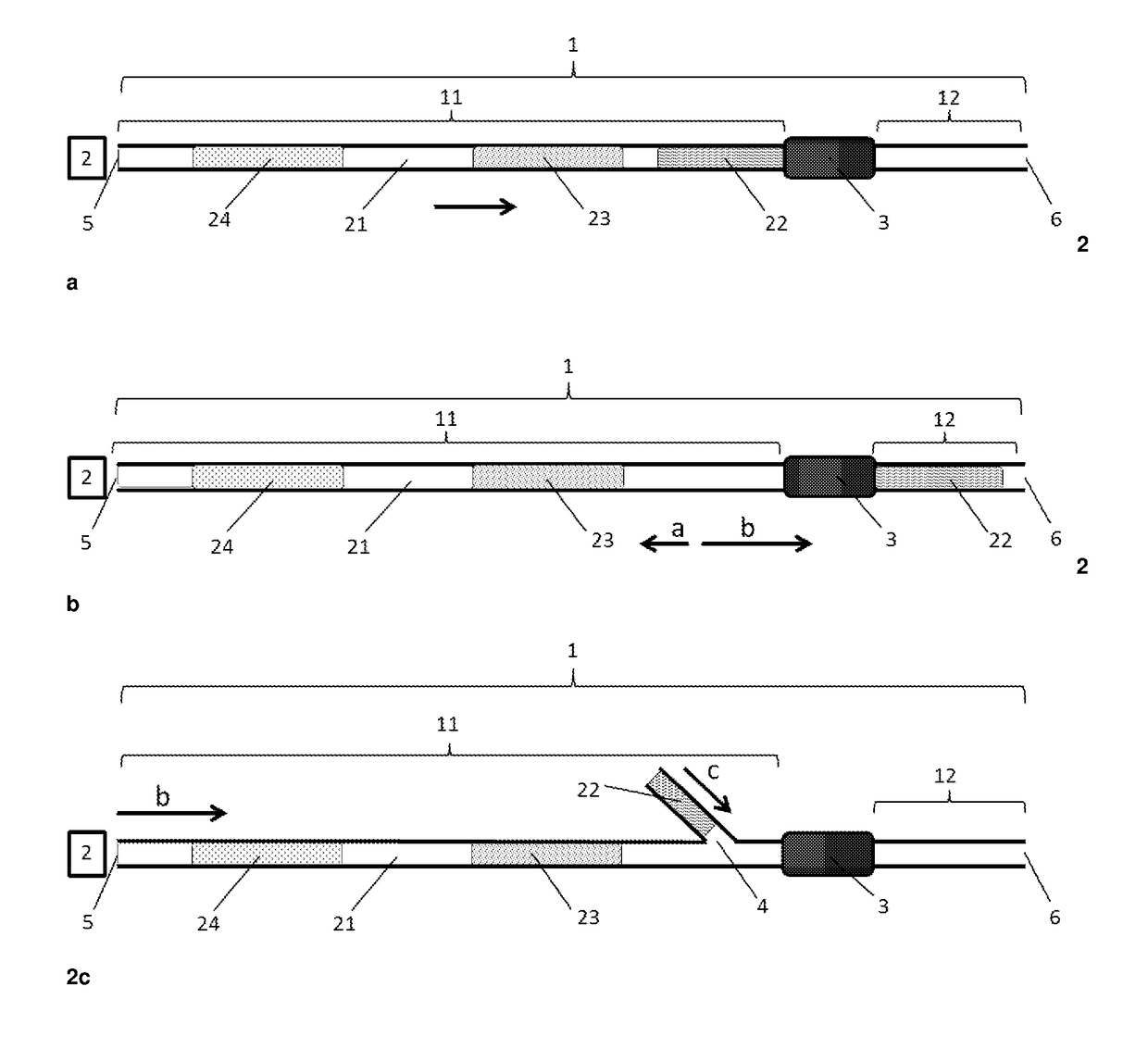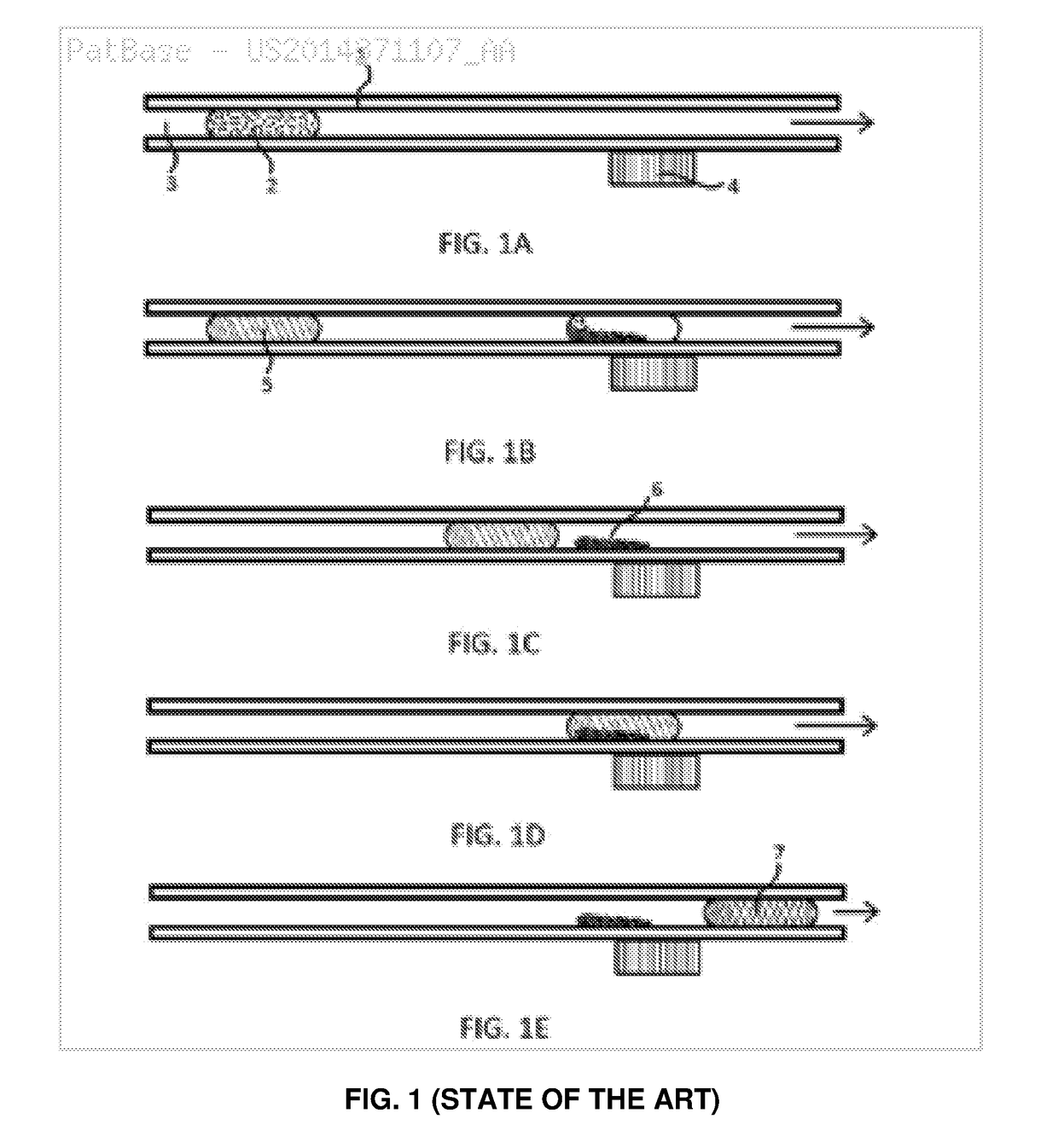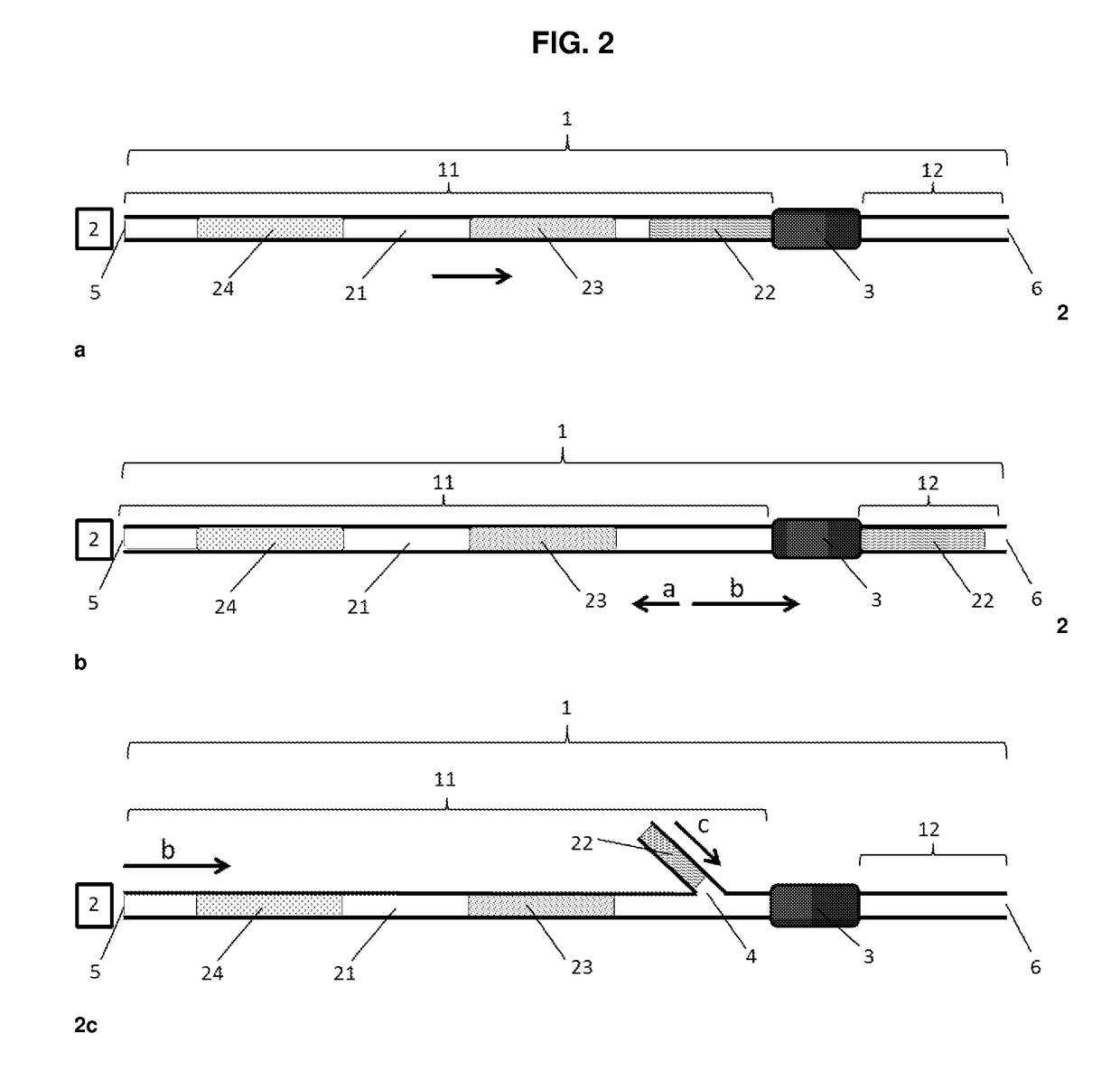Method and System for Isolation of Nucleic Acids
a nucleic acid and isolation method technology, applied in the field of biochemistry, can solve the problems of reducing affecting so as to shorten the duration of the procedure, simplify the procedure, and reduce the efficiency of nucleic acid elution
- Summary
- Abstract
- Description
- Claims
- Application Information
AI Technical Summary
Benefits of technology
Problems solved by technology
Method used
Image
Examples
example 1
[0070]System for DNA Isolation
[0071]In an embodiment of the system according to the invention, as shown schematically in FIG. 2a, the system for isolation / purification / concentration of nucleic acids comprises a conduit 1, preferably a capillary conduit. The first part 11 of the conduit 1 is a reservoir for working fluids, and in an embodiment of the invention may be connected with conveying means 2 (for example a syringe pump, not shown in FIG. 2a, only its location is indicated).
[0072]Another embodiment (not shown in FIG. 2) provides connection of the conveying means 2 in the form of underpressure applied to the second end 6 of the conduit 1, behind the bed 3. Yet another embodiment (not shown in FIG. 2) allows for centrifugation of the entire system, wherein the first part 11 of the conduit 1 is located the closest to the axis of rotation.
[0073]A sample 22, if necessary lysed, may be supplied to the first part 11 of the conduit 1 in front of the bed 3. Between the first part 11 an...
example 2
[0078]Analysis of Efficacy of DNA Isolation with the Method According to the Invention
[0079]2.1. Materials and Methods
[0080]The isolation of DNA for the purposes of this analysis was carried out with the following minicolumn kits: Genomic Mini from A&A Biotechnology, Viral RNA Mini Kit from Syngen, and QIAamp DNA Mini Kit from Qiagen. RNA was isolated with Syngen Viral RNA Mini Kit. All control isolations were carried out in line with recommendations of the manufacturers. The isolations testing if the hydrophobic fluid can be used to improve the isolation were carried out either with minicolumns using a centrifuge or in the system according to the present invention (i.e., with the flow method, according to FIG. 2a), where the nucleic acid binding bed (from commercial kits), immobilised in a Teflon minicolumn, was serially connected with the first part 11 of the conduit, so that the walls of the minicolumn were the walls of the conduit within this section, the minicolumn bed was the ...
PUM
| Property | Measurement | Unit |
|---|---|---|
| temperature | aaaaa | aaaaa |
| constant volume flow rate | aaaaa | aaaaa |
| concentration | aaaaa | aaaaa |
Abstract
Description
Claims
Application Information
 Login to View More
Login to View More - R&D
- Intellectual Property
- Life Sciences
- Materials
- Tech Scout
- Unparalleled Data Quality
- Higher Quality Content
- 60% Fewer Hallucinations
Browse by: Latest US Patents, China's latest patents, Technical Efficacy Thesaurus, Application Domain, Technology Topic, Popular Technical Reports.
© 2025 PatSnap. All rights reserved.Legal|Privacy policy|Modern Slavery Act Transparency Statement|Sitemap|About US| Contact US: help@patsnap.com



